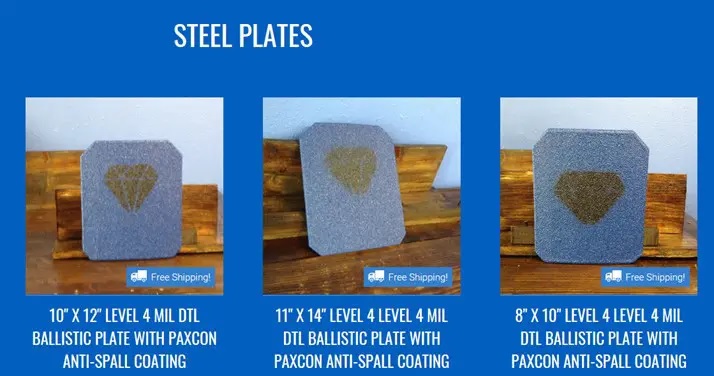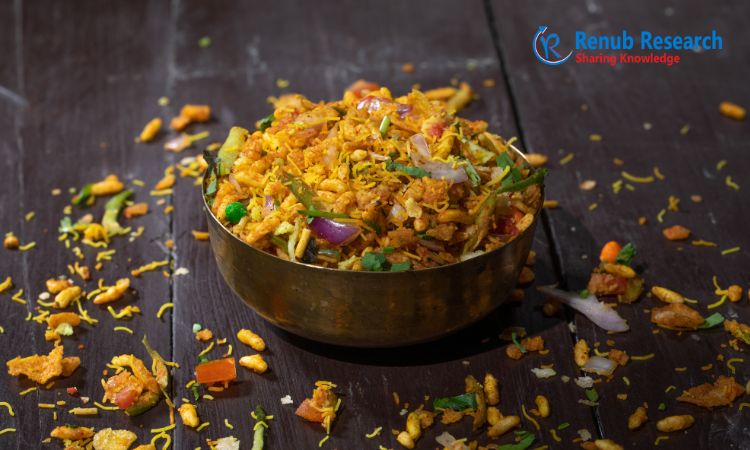When it comes to selecting the best AR Plate , the first question arises in our mind is: What are the different types of AR Plate? While facing tough challenges, we all need a little armor to shield ourselves from the blows of life.
In the world of materials, AR plate is like that superhero armor that protects structures and machinery from the relentless wear and tear they face in various industries. But wait, what exactly is AR plate? And why does it come in different types?
Fear not, dear reader, for I am here to unravel this mystery for you! so, in this article i will describe What are the Different Types of AR Plate?
The Different Types of AR Plate – Choose Your Knight in Shining Armor:
In the world of heavy-duty materials, AR plate stands tall as the fearless guardian against abrasion and impact. These remarkable steel plates come in various types, each with its own set of unique properties and applications. So, let’s embark on a journey to explore the different types of AR plate and discover which one suits your needs best!
AR200 / AR235: The Agile Avenger
Composition and Properties:
AR200 and AR235 are both low-carbon, high-manganese alloys known for their exceptional toughness and wear resistance. Their composition allows them to endure moderate abrasion without sacrificing ductility. These plates have a Brinell hardness range of 180-235, making them formidable contenders in their class.
Recommended Thickness and Width:
AR200 / AR235 plates are often available in thicknesses ranging from 3/16″ to 1″ (4.76mm to 25.4mm) and widths up to 96″ (2438mm). They can also be found in custom sizes upon request.
Common Applications and Industries:
These agile avengers find widespread use in industries like mining, construction, agriculture, and manufacturing. They are a popular choice for dump truck beds, material handling equipment, and conveyor systems. Their ability to tackle moderate wear with grace makes them a reliable partner in various applications.
AR400F: The Sturdy Shield
Composition and Properties:
AR400F, a quenched and tempered alloy, boasts an impressive Brinell hardness range of 360-440. This tough-as-nails plate offers outstanding resistance to abrasion, making it a top pick for harsh environments.
Recommended Thickness and Width:
AR400F plates are typically available in thicknesses from 3/16″ to 4″ (4.76mm to 101.6mm) and widths up to 120″ (3048mm). Custom sizes can be manufactured to cater to specific project requirements.
Notable Applications and Industries:
AR400F is the go-to choice for applications that demand superior wear resistance. It excels in industries like mining, construction, forestry, and recycling. This sturdy shield is widely used in buckets, hoppers, crushers, and even forklifts. Wherever abrasion poses a threat, AR400F rises to the occasion!
AR450F: The Resilient Protector
Composition and Properties:
AR450F, another quenched and tempered alloy, takes resilience to the next level with a Brinell hardness range of 410-490. This plate exhibits exceptional resistance to sliding wear and impact abrasion.
Recommended Thickness and Width:
AR450F plates are commonly available in thicknesses ranging from 3/16″ to 3/4″ (4.76mm to 19.05mm) and widths up to 120″ (3048mm). As always, custom sizes can be crafted to meet specific project needs.
Prominent Applications and Industries:
AR450F shines in applications where sliding wear is a major concern. It finds extensive use in industries like mining, construction, and material handling. Whether it’s chutes, liners, or bulldozer blades, AR450F’s resilience makes it an indispensable asset in the fight against wear.
AR500: The Indomitable Guardian
Composition and Properties:
AR500, with a Brinell hardness range of 470-530, is a force to be reckoned with. This heat-treated alloy is renowned for its uncompromising resistance to both abrasion and impact.
Recommended Thickness and Width:
AR500 plates are available in thicknesses from 3/16″ to 2″ (4.76mm to 50.8mm) and widths up to 120″ (3048mm). For unique projects, custom sizes can be fabricated.
Noteworthy Applications and Industries:
AR500 is the armor of choice for applications that demand exceptional durability, including armored vehicles, shooting range targets, and military-grade equipment. In the industrial battlefield, AR500 stands tall, safeguarding against the harshest wear and impact.
AR600: The Unyielding Sentinel
Composition and Properties:
AR600 is the heavyweight champion with a Brinell hardness range of 570-640. This premium alloy is known for its unparalleled hardness and abrasion resistance.
Varying Thickness Specifications:
AR600 plates are available in varying thicknesses depending on specific manufacturer capabilities. Commonly, they range from 3/16″ to 1″ (4.76mm to 25.4mm).
Promising Applications and Industries:
AR600 finds favor in critical applications that demand the highest level of wear resistance, such as bucket liners, bulldozer blades, and mining equipment. Industries like mining, construction, and material handling rely on AR600 to endure the relentless assault of abrasion.
Choosing the Right AR Plate: Unraveling the Secrets of the Perfect Armor
In the quest for the perfect armor against wear and tear, selecting the right AR plate is of utmost importance. But fear not, brave souls, for I shall guide you through this labyrinth of choices and unveil the factors to consider when choosing the ideal AR plate type for your specific wear-resistant application.
Factors to Consider When Selecting an AR Plate Type:
Hardness – The Measure of Resilience:
The hardness of an AR plate is like the strength of a warrior’s shield. It determines the plate’s resistance to abrasion and impact. Higher hardness offers better wear resistance, but remember, it comes with a trade-off in terms of formability. AR200 / AR235, with moderate hardness, is agile and flexible, while AR500 and AR600, with higher hardness, are unyielding fortresses. Choose wisely, young knights!
Impact Resistance – The Ability to Withstand Blows:
In some applications, withstanding impacts is as crucial as blocking blows in a sword fight. Consider the specific demands of your industry. AR400F, AR450F, and AR500 are well-known for their impressive impact resistance, making them the preferred choice for tasks where toughness is a must.
Thickness – The Thickness of the Warrior’s Armor:
The thickness of an AR plate plays a vital role in its performance. For light wear applications, AR200 / AR235 might suffice, but when facing the relentless assaults of heavy-duty wear, thicker plates like AR400F, AR450F, or AR600 are the guardians you need. However, bear in mind that increased thickness can affect the plate’s formability.
Comparison of AR Plate Types Based on Specific Industry Requirements:
Mining and Construction:
In these industries, where abrasion and impact are constant foes, AR400F stands tall as the go-to choice. Its balanced hardness and impact resistance make it an indispensable ally for bucket liners, crushers, and earthmoving equipment.
Material Handling and Recycling:
When dealing with abrasive materials and heavy impacts, AR450F proves its mettle. Its excellent sliding wear resistance and formidable toughness make it a steadfast defender of chutes, conveyors, and screens.
Armored Vehicles and Military Applications:
In the battlefield, where lives depend on armor, AR500 shines as the invincible sentinel. Its high hardness provides top-tier protection against ballistic threats, securing its place as the armor of choice for military-grade equipment and shooting range targets.
Mining Equipment and Heavy-Duty Machinery:
For applications demanding ultimate wear resistance, AR600 emerges as the undisputed champion. Its exceptional hardness makes it the preferred armor for bulldozer blades, excavator buckets, and other equipment in extreme wear environments.
Insight into the Trade-Offs Between Hardness, Thickness, and Formability:
The realm of AR plates isn’t without trade-offs. As hardness and thickness increase, formability may decrease. So, in the delicate dance between wear resistance and ease of fabrication, one must strike a balance. Evaluate the specific demands of your application and consider the trade-offs carefully. A well-balanced plate can be tailored to meet your needs while maintaining its formability.
Recommendations for Selecting the Appropriate AR Plate Type:
Light Wear Applications:
For moderate abrasion without heavy impact, AR200 / AR235 with its agility and cost-effectiveness might be the ideal choice.
Medium Wear Applications:
When sliding wear and moderate impact are concerns, AR400F can be the reliable shield to safeguard your machinery and structures.
Heavy Wear Applications:
In environments where severe abrasion and substantial impact are daily challenges, AR450F and AR500 step up as the courageous guardians.
Extreme Wear Applications:
When facing the toughest wear conditions, AR600 emerges as the indomitable champion, ready to take on any relentless onslaught.
Choosing the right AR plate is a decision not to be taken lightly. Evaluate the hardness, impact resistance, and thickness requirements based on your industry and specific application. Consider the trade-offs wisely and let the perfect AR plate be your valiant armor, shielding you from the trials of wear and tear as you march triumphantly into the battle of industry.
Choosing the Right AR Plate – Your Quest for the Perfect Armor:
Selecting the right AR plate for your needs is like choosing the right pizza toppings – it can make or break the experience! Consider factors like the level of abrasion your equipment faces, the impact it endures, and your budget. Remember, your armor should fit like a tailored suit, not like your cousin’s hand-me-downs!
Maintenance – Polishing the Knight’s Armor:
Just like knights need a good polishing to shine, AR plates need proper maintenance to retain their resilience. Regular inspections, cleaning, and repairs are essential to keep your armor in top-notch shape. Treat your AR plate well, and it’ll be your trusty sidekick for a long time!
Conclusion – Choose Your AR Plate Wisely:
In the battle against wear and tear, AR plates rise as the stalwart guardians, each bringing its unique strengths to the battlefield. Whether you need the agility of AR200, the sturdiness of AR400F, the resilience of AR450F, the indomitability of AR500, or the unyielding nature of AR600, there’s an AR plate ready to defend your interests.
Remember, selecting the right AR plate is vital to ensure your equipment and structures are shielded against the forces of wear. So, choose wisely, and let your armor protect you through the toughest challenges! May your quest for the perfect AR plate be victorious!




